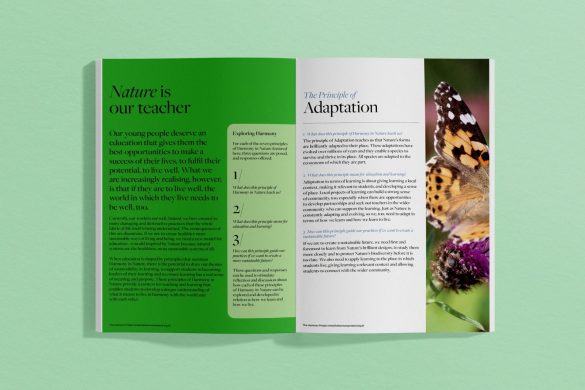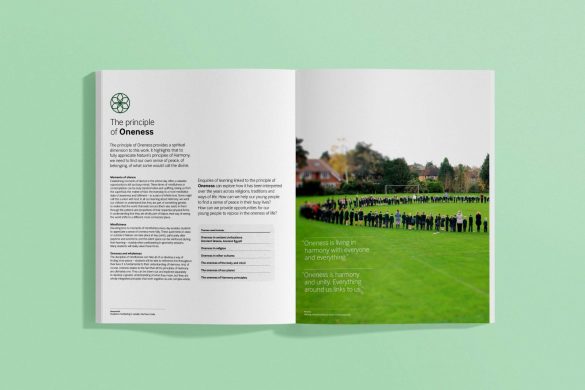FAQs
Got a query about the Harmony approach to education, or about The Harmony Project itself? Here are the answers to some frequently asked questions.
What are Nature’s principles of Harmony?
At The Harmony Project, we work with seven core principles of Harmony which we see in practice in the natural world. These are: the principle of Diversity, the principle of the Cycle, the principle of Interdependence, the principle of Adaptation, the principle of Health, the principle of Geometry and the principle of Oneness. You can find out more about how each of these principles can guide teaching and learning, and how each principle links to issues of sustainability, in the Harmony in Practice section of our website, and by watching the short films in the Media Resources section.
How does the Harmony approach fit with the National Curriculum?
The Harmony approach to education works with the objectives set out in the National Curriculum. Planning teaching and learning often begins with pulling National Curriculum content into a planning document, but the Harmony approach starts with a principle of Harmony, a linked sustainability theme and a clear focus for a half-term of learning. With these in place, the most relevant content from the National Curriculum is drawn in. Developing a Harmony curriculum provides a new framework for delivering National Curriculum skills and content, which puts issues of sustainability and a deep connection with Nature at the heart of teaching and learning.
What support do you offer to schools looking to develop a Harmony approach?
On this website you will find a range of resources that have been developed to support schools and other educational settings that are looking to develop a Harmony approach. This includes articles aimed at senior leaders about linking Nature’s principles of Harmony to school values and developing a whole-school approach to Harmony, as well as guidance for teachers on using the Harmony approach to plan teaching and learning. You’ll also find medium-term planning overviews, themed activity packs and individual lesson plans to help teachers bring Harmony education to life in the classroom. All these resources are free to access and download, and we’re adding to them all the time.
We also offer outreach support such as staff training and consultancy on curriculum development to schools and other education settings. To find out more about the support we may be able to offer you, please get in touch at info@theharmonyproject.org.uk.
My school doesn’t currently teach a Harmony curriculum. How can I explore Harmony with my class?
Even if your school doesn’t currently follow a Harmony curriculum, you can still bring Harmony teaching and learning to your classroom using our individual lesson plans and ideas for Geometry activities. You could also use the short films in the Media Resources section to stimulate ideas and debate on environmental or sustainability issues in lessons or in assemblies.
How does Harmony link to sustainability education?
Nature’s principles of Harmony show us how the world works according to principles that ensure it is sustainable, healthy and resilient. These can teach us how to live in a more enlightened way. For example, when we consider how the principle of the Cycle works in the natural world, we start to understand that there is no waste in Nature and that natural systems are endlessly regenerative. When we use this and other principles of Harmony to frame learning, we can explore with students how we can learn from these principles in order to identify more sustainable ways of living and being.
There are clear links to the UN Sustainable Development Goals, too, in particular target 4.7, which stresses the importance of education in helping learners acquire the skills and knowledge to promote sustainable development and sustainable lifestyles.
Why teach Geometry as part of Harmony education?
The repeated patterns and geometric forms we see in the natural world and in our own bodies remind us that we are very much part of Nature, in spite of our tendency too often to view ourselves as being apart from it. Exploring these patterns and forms through Geometry activities provides opportunities for students to develop their fine motor skills, improve attention to detail and simply enjoy the mindful concentration involved in producing beautiful outcomes of learning inspired by Nature.
Where does Harmony learning fit into the timetable?
A Harmony approach to education is not ‘another thing to fit in’. Rather, it is a new way of framing learning across the curriculum, using enquiries of learning (or themes for learning) to draw together skills and knowledge from different subjects in a coherent and joined-up way. The Harmony approach aims to reconnect the learner with the natural world, allowing students to learn from Nature, in addition to the more common experiences of learning about Nature or in Nature, and to apply this learning to find more sustainable ways of living. It is an approach that gives learning meaning and context, putting issues of sustainability at the heart of the learning process and empowering students to engage with them.
Can't find the answer you're looking for?
Contact us at info@theharmonyproject.org.uk



